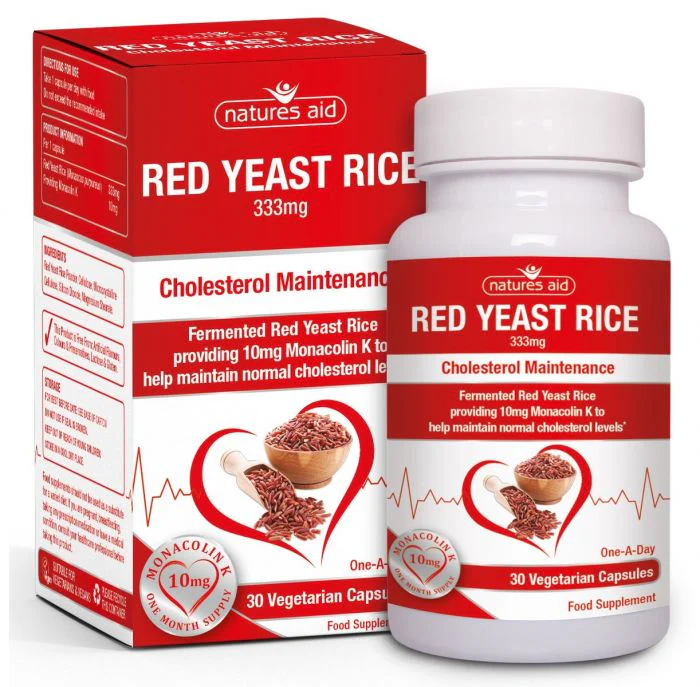
What is Red Yeast Rice ?
In China the Taoist tradition dictates colour has symbolic meaning as a sign of prosperity, good fortune and longevity. You will be familiar with Chinese decorations, Peking duck and red gift envelopes.
In the west we colour food using nitrates which you will be familiar with through red salami and sausages. In China, to attain a red colour they use went rice, which is a natural red food colouring. It is available in most Chinese supermarkets in a powder form.
Went rice is a food that is a deep red bordering on crimson. We know it here as red yeast rice. In China it is known as Hong Qu.
How Red Yeast Rice is made?
It is made by culturing the yeast, monascus purpureus, on rice. When performed under sterile and controlled conditions this produces a group of compounds called monacolins that inhibit HMGCoA, a rate limiting reductase enzyme important in cholesterol synthesis.
Under sterile and controlled conditions non-glutinous rice is cooked and then inoculated with a culture of monascus purpureus (a yeast that has a natural red colouring). The rice is then stored for three weeks at 35 degrees centigrade. At the end of the fermentation period the entire batch of rice is now red. The fermentation is stopped by drying the rice. The dried red rice is pulverised in to fine grade powder. This is the end product and can now be used in food or as a food itself. Chinese emperors and courtiers would consume red yeast rice as they believed it prolonged life.
Fast forward in to the twentieth century when Chinese researchers began to investigate what was actually in the red yeast rice that prolonged life. They wanted to find out if it was true. They isolated a group of compounds called monacolins. The monacolins occurred naturally in the dry rice powder in proportions of 0.1%- 3%. Japanese researchers then began investigating the possible action of these fungal isolates.
Eventually they discovered that the group of compounds called monacolins inhibit HMGCoA, a rate limiting reductase enzyme important in cholesterol synthesis, as well as Q10 steroid hormones and Vitamin D. At the time cholesterol was taking centre stage as a possible target for reducing heart disease and stroke risk. It was theorised that cholesterol was the causative agent of arteriosclerosis, the white hardened plaque that appeared in arteries and heart valves of heart disease patients. It was this plaque that ruptured or broke up and caused a thrombo-embolism in strokes, heart attacks and other vascular events.
If the fungal metabolites, the monocolins, could inhibit cholesterol production and plasma cholesterol levels, then over time would this lead to reduced heart disease in those that consumed it and therefore prolong life? Was this why the Chinese noted its benefits? Over time this monocolin also showed anti-cancer properties in theoretical research.
The researchers were right and soon the statin market was formed. The principle isolate from red yeast rice, monkolin k, was named as lovastatin, the first parent molecule to the rest of the statin family.
Large pharmacetical companies began synthesising lovastatin and selling the drug as an anti-cholesterol cardio-vascular disease modifying agent. Other companies made novel versions. Bayer made a very potent version called cerivastatin that was so strong that a patient suffered bad side effects. The main side effects of these nerw statins was a muscle weakness and fatigue. In extreme presentations of this strain intolerance rhabdomyolysis, (muscle fibre breakdown) occurred. The end stage of rhabdomyolysis is kidney failure and has a high mortality risk. Cerivatstain was withdrawn. The search for a potent stain with less side effects continued and several drugs were launched and marketed. Zocor, Lipitor, Liopstat and Crestor. Lipitor atorvatsion became one of the last blockbusters of the 20th century and became the world's best selling drug.
Quite a journey from a humble yeast. But let us revisit the yeast for a moment. It seems that the yeast is still worth using because it has a low incidence of intolerance. It is easy and cheap to make. It has a long history of use in China.
Many clinical trials have been carried out over the years all over the world. Two human intervention studies (Heber et al., 1999; Lin et al., 2005) investigated the effect of red yeast rice preparations with known monacolin K content on total and LDL-cholesterol concentrations.
